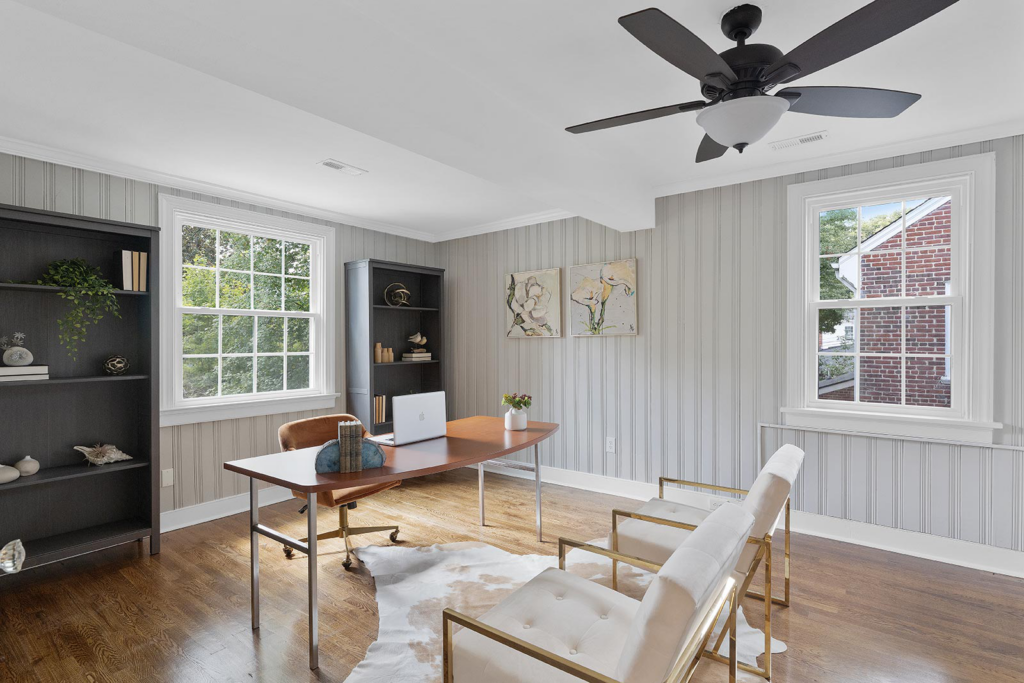Home staging services have become a crucial tool in the real estate industry, designed to transform properties into irresistible spaces that attract potential buyers and encourage them to envision living there. But have you ever wondered why certain staging elements work better than others? The science behind staging goes far beyond mere aesthetics; it involves understanding human psychology and leveraging design principles to influence buyer behavior. Let’s dive into the psychology of home staging and explore how the right design choices can significantly impact a property’s sale.
The Psychology of Space
When a potential buyer walks into a staged home, they’re not just seeing a collection of furniture and decor—they’re interpreting a message about the space. This interpretation is deeply rooted in psychology, specifically how individuals perceive and interact with their environments. Home staging services aim to create a “positive first impression” that resonates emotionally with buyers. Here’s how design choices can influence buyer behavior:
1. Color Psychology
Colors have a profound impact on human emotions and can evoke feelings of comfort, excitement, or even stress. In home staging, the choice of color is deliberate and plays a key role in setting the right tone for the space. Neutral tones like whites, grays, and soft blues are often used because they create a calm, inviting atmosphere that appeals to a broad audience. Warm tones like beige, taupe, and earthy shades can make a space feel cozy and welcoming. Bold colors might be used sparingly as accent walls or in decor to create focal points that draw attention to key areas of the home.
2. Furniture Arrangement and Flow

The arrangement of furniture can significantly impact how a space is perceived. A well-staged home often features furniture that is arranged to highlight the flow of the space and create clear, open pathways. This not only makes the home feel more spacious but also guides the buyer’s attention to the property’s best features. For example, positioning a sofa to face a beautiful view or focal point can direct the buyer’s gaze and make the room feel more inviting. Home staging services use strategic furniture placement to create a sense of comfort and functionality that allows buyers to easily imagine living in the space.
3. Lighting
Lighting is a powerful tool in home staging. Proper lighting can transform a room, highlighting architectural details and creating an inviting ambiance. Natural light is always preferable, but when that’s not an option, artificial lighting can enhance a room’s appeal. Warm, soft lighting can create a cozy and intimate atmosphere, while bright, cool lighting can make a space feel clean and modern. Task lighting in kitchens and bathrooms is also essential to show off these functional spaces. The goal is to make every room feel bright and cheerful, which is known to boost mood and appeal to buyers.
4. Decluttering and Cleanliness
One of the most effective strategies in home staging is decluttering. A clean, organized space can significantly affect a buyer’s perception of a home. Clutter can make a room feel smaller, more chaotic, and less appealing. Professional home staging services focus on decluttering to create a sense of openness and showcase the home’s best attributes. This is not just about removing personal items; it’s about presenting the property in a way that highlights its potential and allows buyers to envision themselves living there.
The Impact on Buyer Behavior
The ultimate goal of staging is to influence buyer behavior. When a potential buyer walks through a staged home, they are more likely to form an emotional connection with the space. This emotional connection can lead to quicker offers and potentially higher sale prices. Studies show that staged homes sell faster and for more money compared to unstaged homes. By addressing buyer psychology through thoughtful design, staging helps buyers see the property’s full potential and motivates them to act quickly.
Conclusion
Understanding the science behind home staging reveals why it’s an essential part of the real estate selling process. From color psychology to furniture arrangement and decluttering, every design element plays a role in shaping how buyers perceive a home. Professional home staging services harness these principles to create spaces that attract buyers and facilitate quick, profitable sales. By leveraging the psychology of design, staging transforms properties into dream homes that buyers can’t resist.
Make Your Property Attractive to Buyers with Home Staging Services from Dila Design
Ready to make your property irresistible? Dila Design offers expert home staging services in Richmond VA, tailored to enhance buyer appeal and drive quick sales. Contact us today to transform your property into a space that buyers can’t forget.
